How to Plant and Care for a Cutting Garden
Establishing a cutting garden is like creating your own floral wonderland, a space where vibrant blooms are just a snip away for your arrangements. Imagine stepping outside your door and being greeted by a riot of colors and fragrances, each flower a testament to your gardening skills. This article provides a comprehensive guide on establishing and maintaining a cutting garden, ensuring you have those stunning blooms throughout the growing season.
Choosing the perfect spot for your cutting garden is crucial. Think of it as finding the ideal stage for your floral performance. You want a location that receives at least 6 to 8 hours of sunlight daily, as most flowering plants thrive in bright conditions. Additionally, consider the quality of the soil; it should be well-draining and rich in organic matter. If your garden area is heavy clay or sandy, you might want to amend it with compost or well-rotted manure to enhance its fertility. Accessibility is also key—after all, you’ll want to stroll through your garden easily, snipping flowers for your vase. So, pick a spot that feels inviting and practical!
Proper soil preparation lays the foundation for a successful cutting garden. Think of your soil as the canvas on which your floral masterpiece will be painted. Start with a soil test to understand its pH and nutrient levels. This will help you determine what amendments are necessary. If your soil is lacking in essential nutrients, consider adding compost, aged manure, or specific fertilizers tailored to the plants you intend to grow. Mixing in organic matter not only improves nutrient levels but also enhances soil structure, promoting better drainage and root growth. Remember, a well-prepared soil means happy plants!
Choosing the right flowers for your cutting garden is essential for a continuous bloom. You want to create a dynamic palette of colors and textures that not only looks good but also attracts pollinators like bees and butterflies. Some popular annuals include zinnias, sunflowers, and cosmos, which bloom profusely and are easy to grow. Perennials like peonies, lavender, and echinacea provide lasting beauty year after year. When selecting flowers, aim for a mix that offers variety in bloom time, ensuring your garden is bursting with life from spring through fall.
Understanding when and how to plant your chosen flowers is key to success. Timing can be everything in gardening! Some flowers, like sunflowers and zinnias, can be directly sown into the soil after the last frost, while others may benefit from starting indoors and transplanting later. Generally, you’ll want to plant your seeds or seedlings in the spring when the soil has warmed up. When planting, follow the recommended spacing on seed packets to allow for air circulation and healthy growth. Remember, patience is a virtue; give your plants time to establish themselves, and they will reward you with stunning blooms!
Effective watering is vital for a thriving cutting garden. Think of watering as giving your plants a refreshing drink after a long day. Too little, and they’ll wilt; too much, and you risk drowning their roots. Aim for deep watering sessions, allowing the soil to dry out slightly between waterings. This encourages deep root growth and resilience in your plants. Consider using drip irrigation or soaker hoses to deliver moisture directly to the roots while minimizing evaporation. Always check the moisture level of your soil before watering—your flowers will thank you!
Protecting your garden from pests and diseases is crucial for healthy blooms. Just like a fortress needs guards, your garden needs protection from unwanted visitors. Start with preventive measures, such as planting pest-resistant varieties and maintaining good garden hygiene. If pests do appear, consider organic solutions like neem oil or insecticidal soap. For diseases, ensure good air circulation and avoid overhead watering to reduce humidity around your plants. Keeping a close eye on your garden will help you catch any issues early and keep your flowers thriving.
Knowing when and how to harvest flowers is essential for maximizing their longevity. The best time to cut your flowers is in the morning when the temperatures are cooler, ensuring they’re hydrated and at their best. Use sharp, clean scissors to make a clean cut at an angle, which helps the stems absorb water more effectively. Remove any leaves that will be submerged in water to prevent rot. After cutting, place your flowers in a bucket of cool water immediately to keep them fresh until you’re ready to arrange them. Your cutting garden is a treasure trove of beauty—treat it with care!
Regular maintenance throughout the growing season ensures your cutting garden remains productive. Just like a car needs regular oil changes, your garden needs attention to thrive. Tasks such as deadheading spent blooms encourage new growth, while fertilizing every few weeks can boost nutrient levels. Keep an eye on your plants and adjust your care routine based on their needs. Seasonal planting adjustments, like rotating crops or introducing new varieties, can keep your garden exciting and full of life!
Once you've harvested your blooms, it's time to create beautiful arrangements that showcase your cutting garden's bounty. Think of arranging flowers as composing a symphony, where each bloom plays its part in a harmonious display. Start with a focal flower, then add supporting blooms and greenery to create depth and texture. Don’t be afraid to experiment with different styles—whether it’s a classic bouquet or a wild, whimsical arrangement, let your creativity shine. Remember, the best arrangements come from the heart!
1. How often should I water my cutting garden?
Watering frequency depends on your soil type and weather conditions. Generally, aim for deep watering once a week, allowing the soil to dry out slightly between sessions.
2. Can I grow perennials in my cutting garden?
Absolutely! Many perennials, like peonies and echinacea, are excellent for cutting gardens and will provide blooms year after year.
3. What is the best time to harvest flowers?
The best time to harvest is in the morning when temperatures are cooler. This helps to ensure the flowers are hydrated and at their freshest.
4. How can I attract pollinators to my cutting garden?
Planting a variety of flowers, especially native species, can attract bees and butterflies. Avoid pesticides that may harm these beneficial insects.

Choosing the Right Location
When it comes to establishing a cutting garden, the location you choose can make all the difference between a vibrant display of blooms and a lackluster patch of soil. Imagine planting a garden that thrives in the sun, where flowers burst forth like fireworks in the sky! To achieve this, you'll need to consider several key factors that will create the perfect environment for your flowers to flourish.
First and foremost, sunlight is a crucial element. Most flowering plants crave at least 6 to 8 hours of direct sunlight each day. So, take a stroll around your yard and observe how the sun travels. Are there shady spots created by trees or buildings? If so, you might want to steer clear of those areas for your cutting garden. Instead, look for a sunny spot that gets plenty of light, as this will encourage your flowers to bloom profusely.
Next up is soil quality. Healthy soil is like a buffet for your plants, providing them with the nutrients they need to thrive. Before you plant a single seed, consider conducting a soil test to determine its pH level and nutrient content. This will help you understand what amendments might be necessary. For instance, if your soil is too acidic, you might need to add lime; if it’s lacking in nutrients, organic matter such as compost can work wonders. Remember, great soil great flowers!
Accessibility is another important factor. Think about how often you’ll need to tend to your garden. A location that’s easy to reach will make watering, weeding, and harvesting a breeze. You don’t want to be trudging through mud or battling through thorny bushes just to snip a few flowers for your vase! So, find a spot that’s conveniently located near your home or a pathway.
Lastly, consider the drainage of the area. Waterlogged soil can lead to root rot and other issues that can jeopardize your garden. If your chosen spot tends to hold water after a rain, you might want to elevate your planting beds or choose a different location altogether. Good drainage is essential for healthy roots and vibrant blooms.
In summary, when selecting the right location for your cutting garden, keep these vital points in mind:
- Sunlight: Ensure at least 6-8 hours of direct sunlight.
- Soil Quality: Test your soil and amend it as necessary.
- Accessibility: Choose a location that is easy to reach.
- Drainage: Ensure the area has good drainage to avoid waterlogging.
By paying close attention to these factors, you’ll be well on your way to creating a cutting garden that not only looks stunning but also provides you with an abundance of beautiful flowers to enjoy throughout the growing season. Now, go ahead and find that perfect spot—it’s time to get planting!
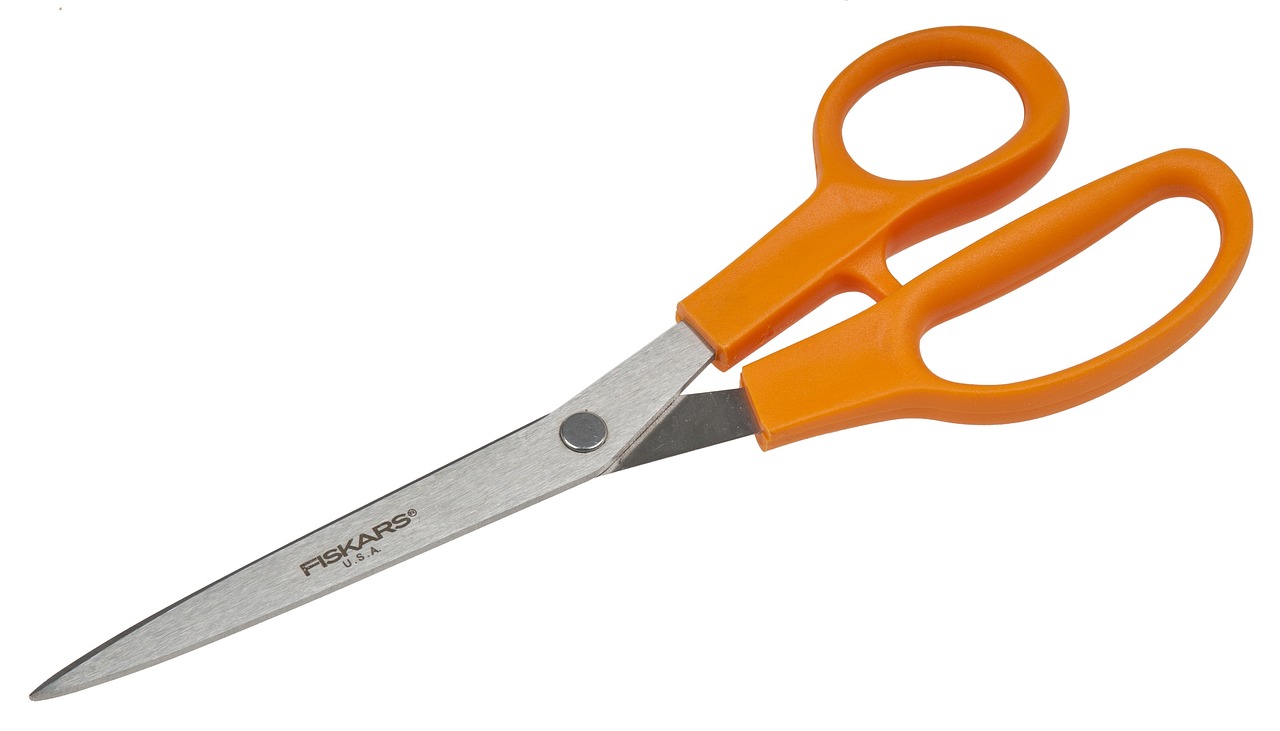
Soil Preparation Techniques
When it comes to planting a successful cutting garden, soil preparation is the unsung hero that lays the groundwork for vibrant blooms. Imagine trying to build a house on a shaky foundation—your garden is no different! Proper soil preparation ensures that your flowers have the best chance to thrive, providing you with a stunning array of blooms for your floral arrangements. So, let’s dig into the essential steps to prepare your soil like a pro!
First things first, soil testing is a crucial step that many novice gardeners overlook. By testing your soil, you can determine its pH, nutrient levels, and texture. Most plants prefer a pH between 6.0 and 7.0, which is slightly acidic to neutral. You can purchase a soil testing kit at your local garden center or send a sample to a lab for a comprehensive analysis. This information will guide you on how to amend your soil effectively.
Once you know what you're working with, it’s time to amend your soil. Depending on the results of your soil test, you might need to add organic matter such as compost, aged manure, or peat moss. These amendments not only improve the soil structure but also enhance its nutrient content. For instance, compost adds essential nutrients while improving drainage and moisture retention. Aim for a soil mixture that is rich, loamy, and well-draining—think of it as a luxurious bed for your flowers to grow in!
Now, let’s talk about best practices for soil preparation. Start by clearing the area of any weeds, rocks, or debris. Weeds are like unwanted guests at a party; they compete for the same resources your flowers need. After you’ve cleared the area, use a garden fork or tiller to loosen the soil to a depth of at least 12 inches. This aeration process allows roots to penetrate deeper and access nutrients more effectively. As you till, mix in your amendments to ensure even distribution.
After tilling, it’s important to level the soil. Rake the surface to create a smooth, even bed, which not only looks great but also helps with water drainage. If you’re working with a larger area, consider creating raised beds. Raised beds offer better drainage and can warm up faster in the spring, giving your flowers a head start. Plus, they can be easier on your back when it comes time to tend to your garden!
Finally, let’s not forget about moisture retention. After you’ve prepared your soil, give it a good watering to help settle the amendments. This initial watering will also activate the beneficial microorganisms in the soil, setting the stage for a healthy growing environment. Remember, healthy soil is alive with activity, and it’s this life that helps your plants flourish.
In summary, preparing your soil is a vital step in establishing a cutting garden that will reward you with beautiful blooms all season long. By testing your soil, amending it with organic materials, and following best practices for preparation, you’re setting up your garden for success. So grab your gardening gloves, roll up your sleeves, and get ready to dig in!
- How often should I test my soil? It's a good idea to test your soil every few years, or whenever you're planning to make significant changes to your garden.
- Can I use regular garden soil for my cutting garden? While you can use garden soil, amending it with organic material will provide better nutrients and structure for your flowers.
- What is the best time to prepare my soil? The best time to prepare your soil is in the spring, just before planting, or in the fall to get a head start for the next growing season.

Selecting Suitable Flower Varieties
Choosing the right flowers for your cutting garden is like picking the perfect ingredients for a delicious recipe. You want blooms that not only look stunning in arrangements but also thrive in your specific growing conditions. The key is to select a mix of annuals and perennials that will provide a continuous display of color and texture throughout the season. Annuals, such as zinnias and cosmos, are fantastic for their quick growth and vibrant blooms. They can be sown directly into the garden and will reward you with flowers in just a few weeks. On the other hand, perennials like peonies and dahlias might take a little longer to establish, but they return year after year, creating a reliable source of beauty.
When selecting flower varieties, consider not only their visual appeal but also their fragrance and attraction to pollinators. Flowers like lavender and sweet peas not only add aesthetic value to your garden but also invite bees and butterflies, which are essential for a healthy ecosystem. Additionally, think about the color palette you want to achieve. Would you prefer a riot of colors or a more subdued, monochromatic scheme? Mixing different heights, shapes, and colors will create visual interest and make your arrangements pop.
Here’s a quick look at some popular flower varieties that are perfect for cutting gardens:
| Flower Type | Annuals | Perennials |
|---|---|---|
| Zinnias | ✔️ | |
| Cosmos | ✔️ | |
| Sunflowers | ✔️ | |
| Peonies | ✔️ | |
| Dahlias | ✔️ | |
| Lavender | ✔️ |
Another important factor to consider is the growing zone of your location. Different flowers thrive in different climates, so check your USDA hardiness zone to ensure your selections can withstand the local weather conditions. Additionally, pay attention to the bloom time of each variety. By staggering your planting times and selecting flowers that bloom at different intervals, you can ensure a steady supply of fresh blooms for your arrangements from spring through fall.
Lastly, don't forget to take your personal preferences into account. If you have a particular flower that holds sentimental value or one that you simply adore, make sure to include it in your cutting garden. After all, this garden is a reflection of you, and it should bring you joy every time you step outside!
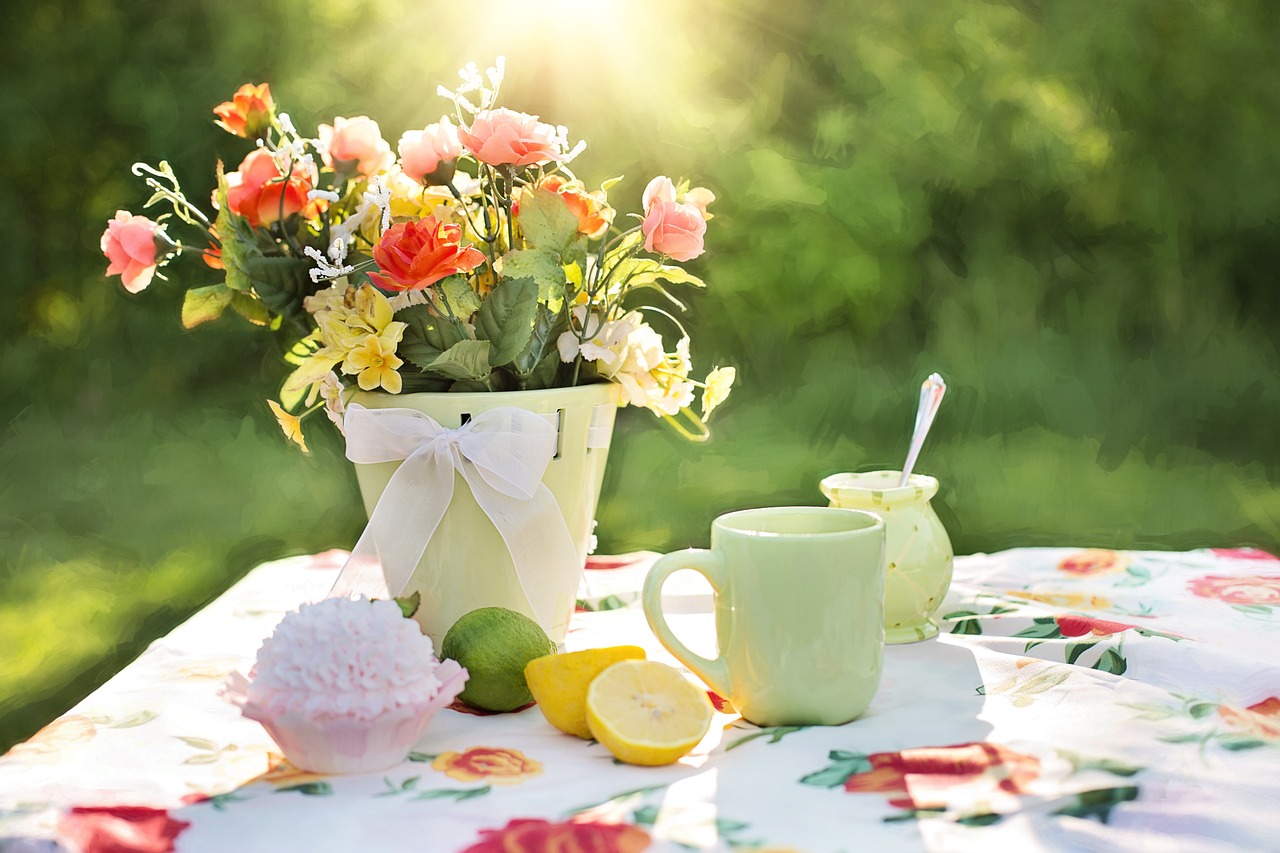
Planting Methods and Timing
When it comes to establishing a cutting garden, understanding the right planting methods and timing can make all the difference between a flourishing display of blooms and a garden that falls flat. Imagine planting a garden that not only fills your home with vibrant colors but also provides you with fresh flowers for arrangements throughout the season. Sounds enticing, right? Let's dive into the nitty-gritty of planting techniques and the ideal timing for your flowers!
First off, you have two primary methods for planting: direct sowing and transplanting. Direct sowing is the process of planting seeds directly into the soil where they will grow. This method is often favored for annuals such as sunflowers and zinnias, which thrive when sown directly into warm soil. However, keep in mind that this approach requires you to wait for the seeds to germinate, which can take anywhere from a few days to a couple of weeks, depending on the species.
On the other hand, transplanting involves starting your seeds indoors or in a greenhouse and then moving them outside once they have developed a strong root system. This method is particularly beneficial for varieties like snapdragons and dahlias, which can be finicky about temperature. By starting them indoors, you give them a head start, ensuring they bloom earlier in the season. If you choose this route, aim to transplant your seedlings outdoors after the last frost date in your area, which is crucial for their survival.
Now, let’s talk about timing. Timing is everything in the world of gardening, and cutting gardens are no exception. Most flowers should be planted in the spring, but some hardy varieties can be sown in the fall for an early spring bloom. To help you navigate the planting calendar, here’s a simple table that outlines when to plant various types of flowers:
| Flower Type | Planting Method | Best Planting Time |
|---|---|---|
| Sunflowers | Direct Sow | After last frost in spring |
| Snapdragons | Transplant | 6-8 weeks before last frost |
| Zinnias | Direct Sow | After last frost in spring |
| Dahlias | Transplant | After last frost in spring |
Moreover, understanding your local climate is essential. Different regions have varying growing seasons, so always check your local planting calendar. This will help you avoid the disappointment of planting too early or too late. As a general rule of thumb, wait until the soil temperature reaches at least 60°F (15°C) before planting warm-season flowers. You can use a soil thermometer for accuracy.
Lastly, don't forget to consider the spacing of your plants. Crowding can lead to competition for nutrients and sunlight, which can stunt growth. It's often recommended to follow the spacing guidelines provided on seed packets or plant labels. This way, each flower has room to grow and flourish, ensuring your cutting garden is the envy of the neighborhood.
In summary, whether you choose to direct sow or transplant, understanding the timing and methods for planting your flowers is vital for a successful cutting garden. With a little planning and attention to detail, you’ll soon be on your way to creating a stunning floral haven that will provide you with beautiful blooms all season long!
- What is the best time to plant a cutting garden? The best time generally falls in the spring after the last frost, but some hardy varieties can be planted in the fall.
- Should I direct sow or transplant my flowers? It depends on the flower variety. Annuals like sunflowers are often best direct sown, while others like snapdragons benefit from being started indoors.
- How can I tell when the soil is warm enough to plant? Use a soil thermometer; aim for at least 60°F (15°C) for warm-season flowers.
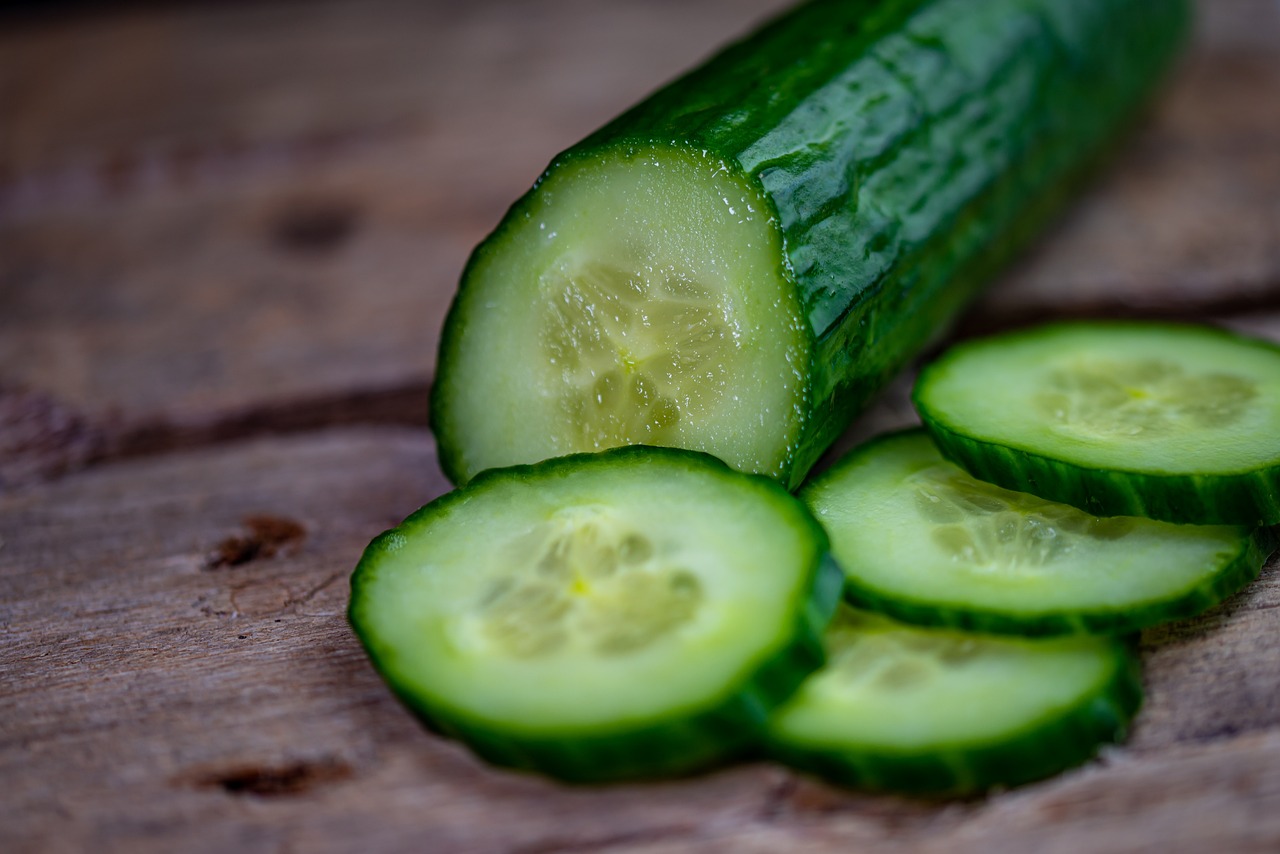
Watering and Irrigation Strategies
When it comes to nurturing your cutting garden, watering is not just a routine task; it’s an art form. Think of your plants as thirsty friends at a party—if you don’t refresh their drinks regularly, they’ll wilt and fade away. The key is to strike a balance between providing enough moisture and avoiding the dreaded overwatering, which can lead to root rot and other issues. So, how do you achieve this balance? Let’s dive into some effective strategies!
First off, consider the type of soil in your garden. Sandy soils drain quickly, while clay soils retain moisture longer. Understanding your soil type will help you determine how often and how much to water. A simple soil test can reveal its composition, allowing you to tailor your watering schedule. For example, if your garden has sandy soil, you might need to water more frequently compared to a garden with rich, loamy soil.
Next, let’s talk about irrigation methods. There are several ways to keep your cutting garden hydrated:
- Drip Irrigation: This method delivers water directly to the roots, minimizing evaporation and runoff. It’s efficient and perfect for larger gardens.
- Soaker Hoses: Similar to drip irrigation, soaker hoses allow water to seep out slowly along their length, ensuring even moisture distribution.
- Sprinklers: Ideal for larger areas, but be cautious; they can lead to water wastage if not timed properly.
Regardless of the method you choose, timing is everything. Early morning is the best time to water your garden. This allows the plants to absorb moisture before the heat of the day causes evaporation. Plus, watering in the evening can promote fungal diseases due to prolonged moisture on the leaves. So, rise and shine with your watering can!
Another important aspect to consider is the frequency of watering. During the growing season, most flowers need about an inch of water per week. However, during particularly hot or dry spells, you may need to increase this amount. A simple way to check if your plants need water is to stick your finger about an inch into the soil. If it feels dry, it’s time to water!
Finally, let’s not forget about mulching. Adding a layer of organic mulch around your plants helps retain soil moisture, suppress weeds, and regulate soil temperature. Think of it as a cozy blanket for your plants, keeping them warm and hydrated in the cooler months while preventing them from overheating in the summer sun.
In summary, effective watering and irrigation strategies are crucial for a thriving cutting garden. By understanding your soil, selecting the right irrigation method, timing your watering correctly, and incorporating mulch, you can ensure your flowers remain vibrant and healthy throughout the growing season. Remember, a well-watered garden is a happy garden!
Q: How do I know when to water my cutting garden?
A: Check the soil moisture by sticking your finger about an inch deep. If it feels dry, it’s time to water.
Q: Can I water my garden in the evening?
A: While it’s possible, it’s best to water in the early morning to prevent fungal diseases and allow for evaporation during the day.
Q: What is the best irrigation method for a small garden?
A: For small gardens, soaker hoses or a simple watering can work well, providing targeted moisture without overwatering.
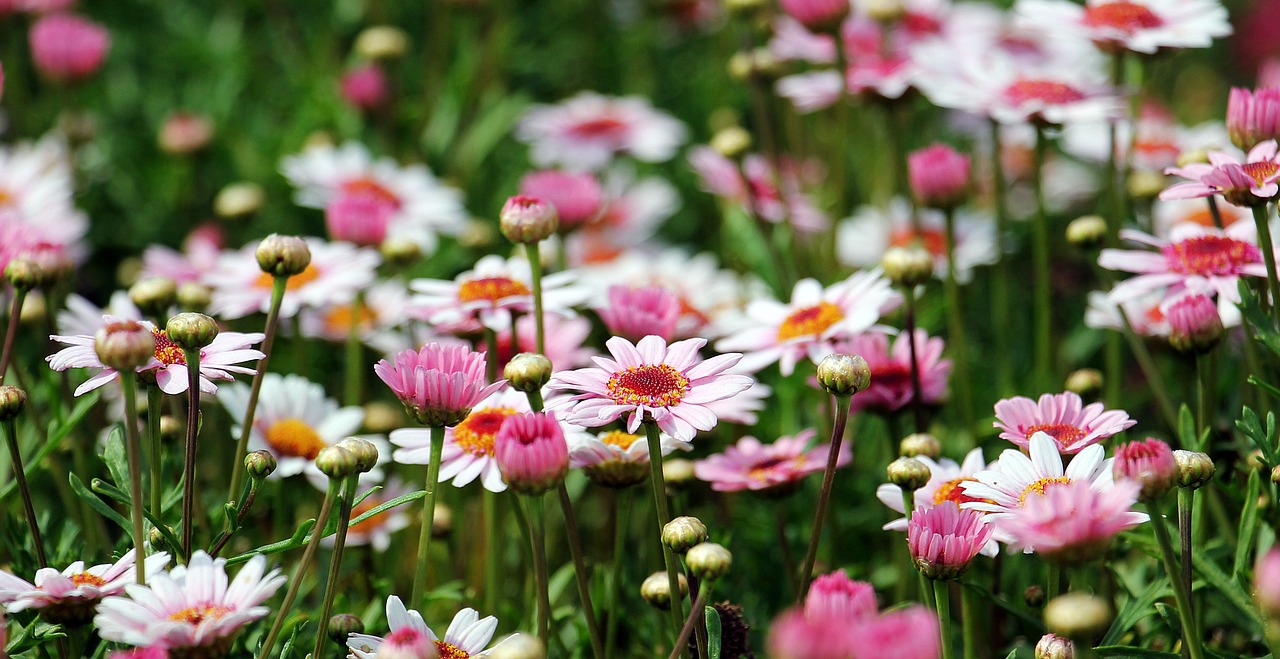
Pest and Disease Management
Managing pests and diseases in your cutting garden is not just a chore; it's an essential part of ensuring your flowers thrive and bloom brilliantly. Imagine pouring your heart into nurturing those vibrant blooms only to have them devoured by pesky insects or afflicted by diseases. The good news is that with a little knowledge and proactive care, you can keep your garden flourishing. First off, it’s crucial to regularly inspect your plants for any signs of trouble. Look for discolored leaves, unusual spots, or even the presence of insects. Early detection can make all the difference!
When it comes to pest management, you have a couple of options: organic and chemical methods. Organic pest control is often favored by gardeners who want to maintain a healthy ecosystem. This can include introducing beneficial insects like ladybugs that feast on aphids or using natural sprays made from neem oil or insecticidal soap. These methods not only help keep pests at bay but also promote a balanced environment in your garden.
On the other hand, chemical pesticides can be effective, but they come with risks, including harming beneficial insects and pollinators. If you choose this route, it’s vital to read the labels carefully and apply them according to the instructions to minimize any negative impacts. Remember, the goal is to protect your flowers while maintaining the health of your garden.
In addition to pests, diseases can also wreak havoc on your cutting garden. Fungal infections, for example, can spread rapidly in humid conditions. To combat this, ensure good air circulation around your plants by spacing them appropriately. If you notice any infected plants, it’s best to remove them immediately to prevent the spread of disease. You can also utilize crop rotation and resistant flower varieties to keep your garden healthy year after year.
Here’s a quick reference table to help you identify common pests and diseases along with their organic management strategies:
| Pest/Disease | Symptoms | Organic Control |
|---|---|---|
| Aphids | Sticky residue, curled leaves | Introduce ladybugs, neem oil spray |
| Powdery Mildew | White powdery spots on leaves | Increase air circulation, apply baking soda solution |
| Slugs and Snails | Holes in leaves, slime trails | Use beer traps, handpick at night |
| Botrytis Blight | Gray mold on flowers and leaves | Remove infected parts, improve air flow |
Ultimately, the key to successful pest and disease management lies in observation and action. By staying vigilant and employing both organic and preventative strategies, you can create a cutting garden that not only looks stunning but also remains healthy and productive throughout the growing season. So, roll up your sleeves, get your hands dirty, and enjoy the process of nurturing your floral paradise!
Q: How often should I check my garden for pests?
A: It's a good idea to check your garden at least once a week, but more frequent checks during the growing season can help catch issues early.
Q: Are organic pest control methods effective?
A: Yes, many organic methods are effective, especially when used proactively and in combination with good garden practices.
Q: What should I do if I find a diseased plant?
A: Remove the infected plant immediately to prevent the spread of disease, and consider improving air circulation around your other plants.
Q: Can I use chemical pesticides in my cutting garden?
A: Yes, but be cautious. Always follow the instructions on the label and consider the impact on beneficial insects and pollinators.
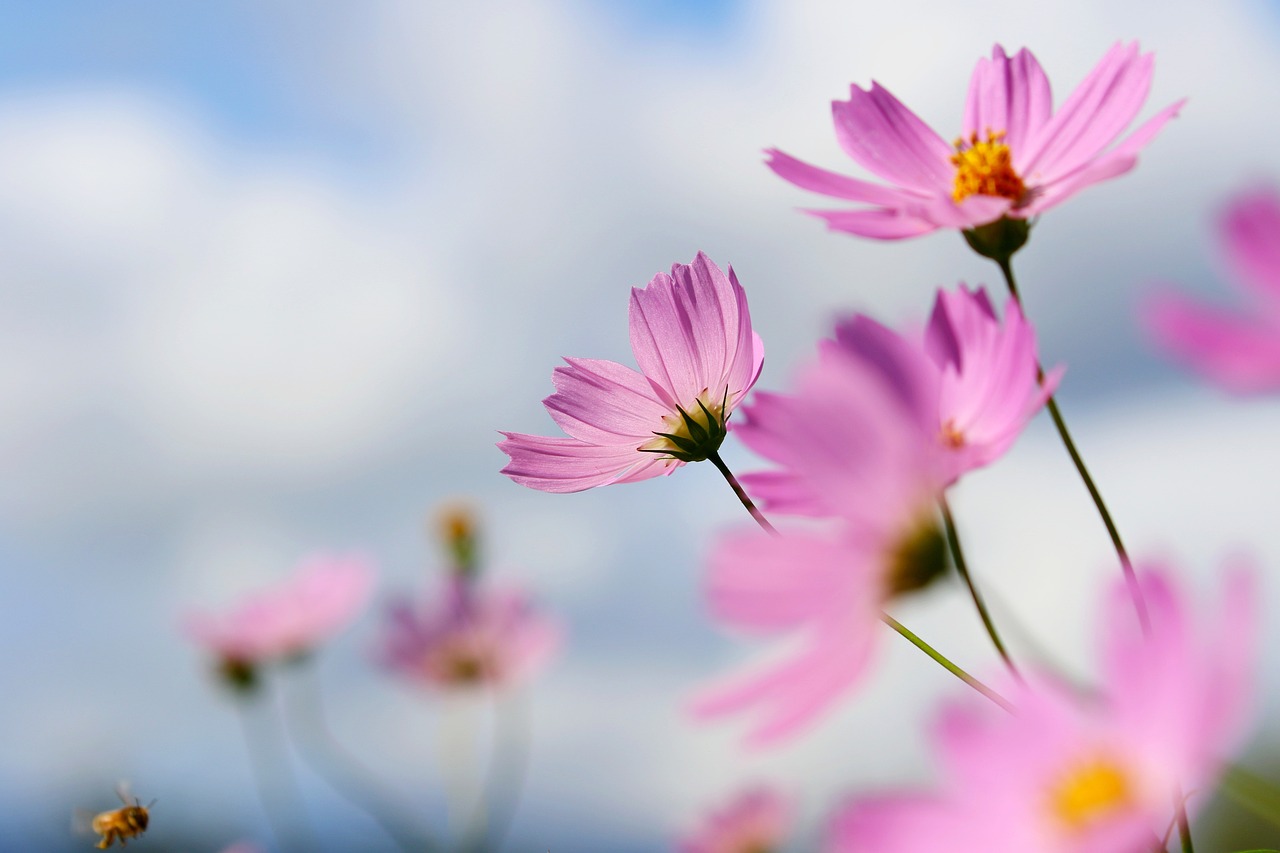
Harvesting Techniques
Harvesting flowers from your cutting garden is not just about snipping stems; it's an art that can significantly impact the longevity and beauty of your arrangements. Timing is everything! You want to ensure that you’re picking your blooms at the right moment, typically when they are just beginning to open. This ensures they’ll continue to bloom beautifully in your arrangements. Think of it as catching a flower in its prime, ready to dazzle!
To get started, gather your tools. A sharp pair of garden shears or scissors is essential. Dull tools can crush stems, leading to premature wilting. Before you begin, it’s a good idea to have a clean bucket of water ready. As you harvest, immediately place the stems in the water to keep them hydrated. This simple step can make a world of difference in how long your flowers last.
When you’re out in the garden, consider the following techniques:
- Cut at the Right Angle: Always cut stems at a 45-degree angle. This increases the surface area for water uptake and prevents the stem from sitting flat on the bottom of the vase.
- Remove Foliage: Strip any leaves that will be below the water line in your vase. This helps prevent bacterial growth, which can shorten the life of your flowers.
- Harvest in the Morning: The best time to cut flowers is early in the morning when temperatures are cooler and moisture levels are higher. This ensures the flowers are well-hydrated.
After harvesting, conditioning your flowers is crucial. This involves placing them in a clean bucket of water and letting them sit for a few hours or even overnight in a cool place. This process allows the stems to absorb water and can significantly enhance their lifespan. Think of it as giving your flowers a refreshing drink after a long day!
When you're ready to arrange your blooms, remember that each flower has its own unique characteristics. Some flowers, like sunflowers and zinnias, can handle a bit of rough treatment, while others, like peonies and dahlias, require a gentler touch. Knowing the specific needs of each flower type will help you create stunning arrangements that last longer.
In summary, harvesting is a blend of technique and care. By following these guidelines, you’ll not only enjoy the fruits of your labor but also create beautiful floral displays that showcase the vibrant life of your cutting garden. Happy harvesting!
Q: When is the best time to harvest flowers?
A: The best time to harvest is early in the morning when the flowers are well-hydrated and temperatures are cooler.
Q: How do I condition my flowers after harvesting?
A: Place your freshly cut flowers in a clean bucket of water and let them sit for a few hours or overnight in a cool place.
Q: Should I cut flowers with a specific tool?
A: Yes, use sharp garden shears or scissors to avoid crushing the stems, which can lead to wilting.
Q: Can I harvest flowers at any stage of bloom?
A: It's best to harvest flowers when they are just beginning to open for optimal longevity in arrangements.
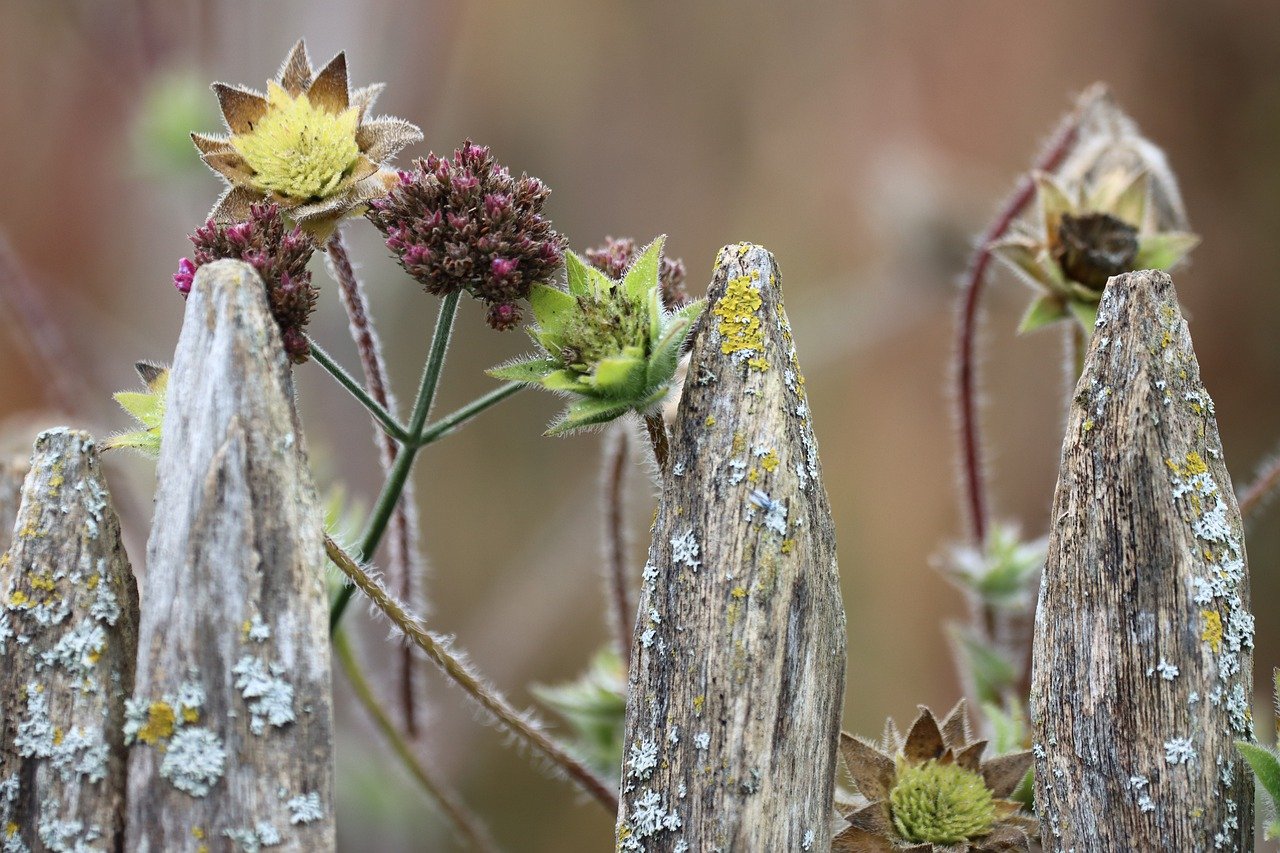
Seasonal Maintenance Tips
Maintaining a cutting garden throughout the growing season is like nurturing a relationship; it requires attention, love, and a bit of effort to keep things blooming beautifully. To ensure your flowers remain vibrant and productive, it’s essential to stay on top of seasonal maintenance tasks. Think of these tasks as the routine check-ups that keep your garden healthy and thriving, much like a gardener's version of a wellness plan!
One of the most critical components of seasonal maintenance is deadheading. This practice involves removing spent blooms to encourage further flowering. When you snip off those faded flowers, it’s like giving your plants a little pep talk, urging them to produce more buds. Regular deadheading not only enhances the aesthetic appeal of your garden but also redirects the plant's energy towards new growth rather than seed production.
Additionally, fertilizing plays a vital role in keeping your cutting garden flourishing. Depending on the type of flowers you’re growing, the need for nutrients can vary. A balanced fertilizer applied every few weeks during the growing season can work wonders. For instance, using a fertilizer high in phosphorus can promote blooming, while nitrogen-rich options can enhance foliage growth. It's essential to read the instructions carefully and tailor your fertilization schedule to the specific needs of your plants.
Another important aspect is seasonal planting adjustments. As the seasons change, so do the needs of your garden. Early spring is the perfect time for sowing hardy annuals and perennials, while mid-summer is ideal for planting fall-blooming varieties. Keeping track of these timelines can be the difference between a garden that thrives and one that merely survives. You might even consider creating a simple planting calendar to keep you organized!
Moreover, regular weeding is crucial. Weeds are like uninvited guests at a party; they can take up space and resources that your flowers need to thrive. Make it a habit to check your garden weekly and pull out any weeds you spot. This not only keeps your garden looking tidy but also prevents competition for nutrients.
Lastly, don’t forget about pest control. Keeping an eye out for pests is essential for maintaining the health of your cutting garden. If you notice any unwanted visitors, early intervention is key. Consider using organic methods, like introducing beneficial insects or using neem oil, to keep pests at bay without harming your plants or the environment.
To summarize, here’s a quick reference table of the essential seasonal maintenance tasks:
| Task | Frequency | Purpose |
|---|---|---|
| Deadheading | As needed | Encourages new blooms |
| Fertilizing | Every 4-6 weeks | Promotes healthy growth |
| Weeding | Weekly | Prevents competition for resources |
| Pest Control | As needed | Keeps plants healthy |
| Seasonal Planting Adjustments | Seasonally | Maximizes bloom potential |
By keeping these seasonal maintenance tips in mind, you can ensure that your cutting garden remains a vibrant source of blooms throughout the year. Remember, a little attention goes a long way in cultivating a garden that not only looks stunning but also provides you with beautiful flowers for arrangements!
Q: How often should I deadhead my flowers?
A: You should deadhead your flowers as soon as you notice spent blooms. This encourages the plant to produce more flowers.
Q: What type of fertilizer is best for a cutting garden?
A: A balanced fertilizer with equal parts nitrogen, phosphorus, and potassium is ideal. However, you may want to adjust based on the specific needs of your plants.
Q: How can I prevent pests in my cutting garden?
A: Regularly inspect your plants for signs of pests. Introduce beneficial insects, use organic pesticides, and maintain healthy plants to minimize pest issues.
Q: When is the best time to plant flowers for a cutting garden?
A: Early spring is great for hardy annuals and perennials, while mid-summer is perfect for fall-blooming varieties. Timing can vary based on your local climate.
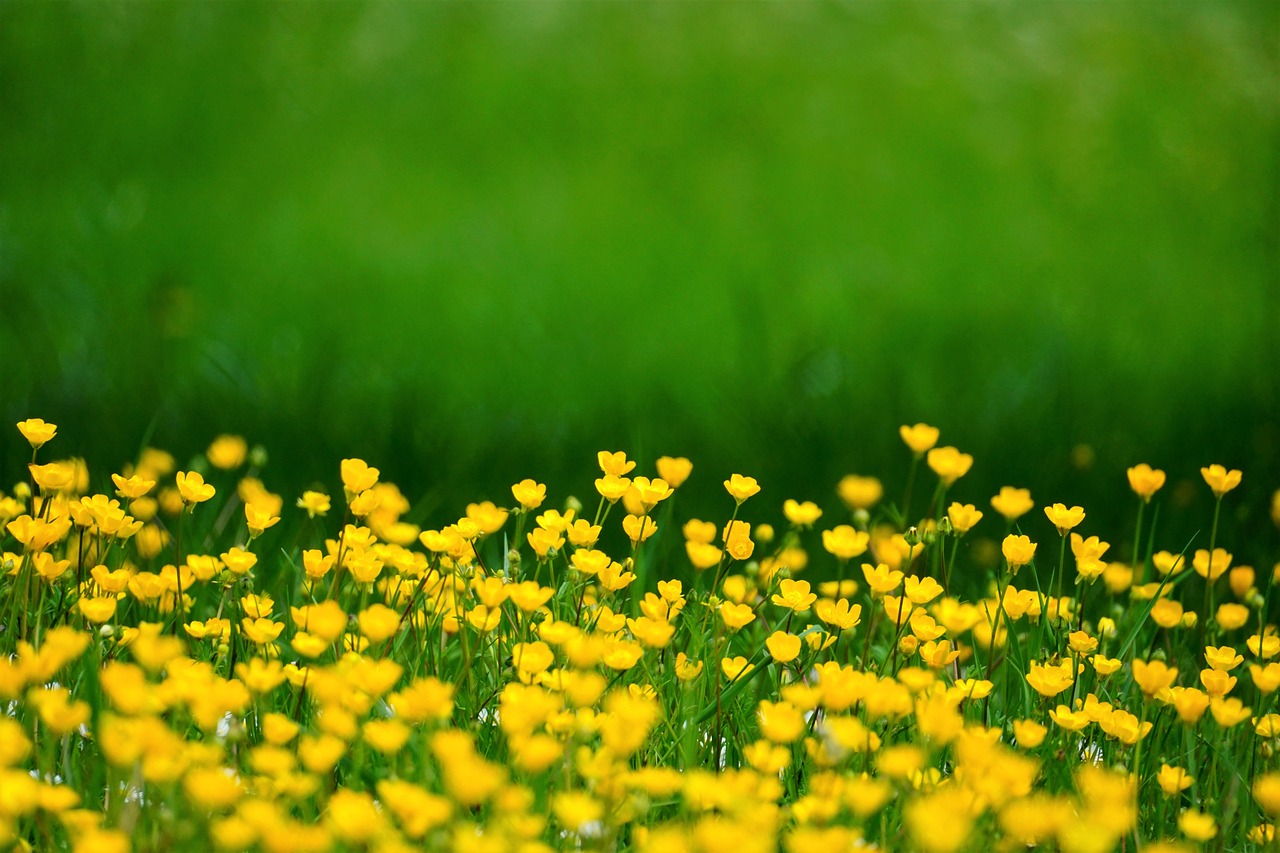
Creating Stunning Floral Arrangements
Once you've harvested the vibrant blooms from your cutting garden, it's time to unleash your creativity and dive into the world of floral design. Creating stunning floral arrangements is not just about placing flowers in a vase; it's an art form that can transform your home and elevate any occasion. Think of your arrangement as a painting—each flower is a brushstroke that contributes to the overall masterpiece. So, how do you turn those beautiful blooms into a breathtaking display?
First, consider the color palette you want to work with. Flowers come in a myriad of colors, and choosing a harmonious combination can make a significant impact. You might want to stick to a monochromatic scheme for a sophisticated look, or go for a vibrant mix for a more cheerful vibe. As a general rule, aim for a balance of colors, and don't shy away from incorporating greenery, which can add depth and texture to your arrangements.
Next, think about the shape and size of your arrangement. Are you going for a tall, dramatic centerpiece or a low, lush bouquet? The container you choose will influence this decision. For instance, a narrow vase can highlight vertical flowers like delphiniums, while a wide bowl may be perfect for a loose, sprawling arrangement filled with peonies and daisies. Consider the proportions of the flowers in relation to the vase—too many small flowers in a large vase can make the arrangement feel lost, while a few bold blooms can create a stunning focal point.
When it comes to assembling your arrangement, start with the foliage. This base layer provides structure and sets the stage for your flowers. Once you have your greens in place, begin adding your focal flowers, followed by secondary blooms to fill in gaps. Remember to trim the stems at an angle to allow for better water absorption and to remove any leaves that will sit below the water line, as they can promote bacterial growth.
As you build your arrangement, step back occasionally to assess its overall look. Just like a sculptor chiseling away at a block of marble, you may find that less is more. Don't hesitate to remove any flowers that feel out of place or overcrowded. And if you're feeling adventurous, consider adding unexpected elements like twigs, berries, or even seasonal fruits to provide a unique twist that will surprise and delight anyone who sees your creation.
Finally, once your arrangement is complete, take a moment to condition your flowers. This means giving them a fresh cut and placing them in water immediately to ensure they stay hydrated. You can also add a floral preservative to the water to prolong their life. A little care goes a long way in ensuring that your stunning arrangement remains fresh and vibrant for as long as possible.
In summary, creating stunning floral arrangements is a delightful process that allows you to express your personal style and creativity. With a bit of practice and attention to detail, your cutting garden's blooms can be transformed into beautiful displays that enhance your living space and bring joy to those who see them. So, gather your flowers, let your imagination run wild, and enjoy the therapeutic experience of arranging your own stunning bouquets!
- How long do freshly cut flowers last? Freshly cut flowers can last anywhere from a few days to a couple of weeks, depending on the type of flower and how well they are cared for.
- What is the best way to keep cut flowers fresh? Keep your flowers in a cool place, change the water every couple of days, and trim the stems to ensure they absorb as much water as possible.
- Can I mix different types of flowers in one arrangement? Absolutely! Mixing different flower types can create a more dynamic and visually interesting arrangement.
Frequently Asked Questions
- What is a cutting garden?
A cutting garden is a specially designed area where you grow flowers specifically for cutting and arranging. It allows you to have fresh blooms at your fingertips for floral arrangements throughout the growing season, adding beauty to your home and special occasions.
- How do I choose the right location for my cutting garden?
The ideal location for your cutting garden should receive at least 6-8 hours of sunlight daily. Look for well-drained soil that is rich in nutrients, and ensure it's easily accessible for regular maintenance and harvesting. Avoid spots with heavy shade or standing water.
- What are the best soil preparation techniques?
Start by testing your soil to understand its pH and nutrient levels. Amend the soil with organic matter like compost to improve its structure and fertility. Tilling the soil can also help aerate it and promote healthy root growth for your flowers.
- Which flower varieties are best for a cutting garden?
Popular choices include sunflowers, zinnias, dahlias, and cosmos for annuals, while perennials like peonies, coneflowers, and hydrangeas are great for long-term blooms. Choose a mix of varieties to ensure continuous blooms throughout the season and attract beneficial pollinators.
- When is the best time to plant flowers in my cutting garden?
Timing depends on the flower varieties you choose. Generally, you can start planting annuals in the spring after the last frost. For perennials, early spring or fall is ideal. Always check the specific planting times for your selected flowers to ensure optimal growth.
- How often should I water my cutting garden?
Watering needs vary, but a good rule of thumb is to ensure the soil stays consistently moist but not soggy. Deep watering once or twice a week is often sufficient, depending on rainfall and temperature. Always check the soil moisture before watering to avoid overwatering.
- What are some effective pest and disease management strategies?
Regularly inspect your plants for signs of pests or diseases. Implement organic methods like introducing beneficial insects, using neem oil, or applying insecticidal soap. Crop rotation and good sanitation practices can also help prevent disease and pest problems.
- How do I know when to harvest my flowers?
Harvest flowers in the morning when they are most hydrated. Look for blooms that are just opening or fully opened, depending on the type of flower. Use sharp scissors or shears to cut stems at an angle, which helps the flowers absorb water better.
- What seasonal maintenance tasks should I perform in my cutting garden?
Essential tasks include deadheading spent blooms to encourage new growth, fertilizing every few weeks, and checking for pests and diseases regularly. In the fall, consider cleaning up debris and preparing the soil for the next planting season.
- How can I create beautiful floral arrangements from my cutting garden?
Start by selecting flowers that complement each other in color and texture. Use a mix of shapes and sizes for visual interest. Don’t forget to include greenery! Experiment with different arrangements, and remember to change the water regularly to keep your flowers fresh.



















